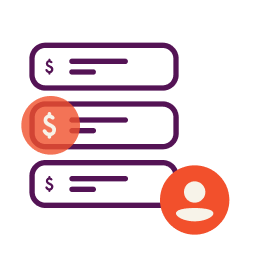It might be a little chilly outside, but you’re going to be saying brrrr for some other reasons. Particularly, when it comes to real estate investments.
BRRRR stands for Buy, Rehab, Rent, Refinance, Repeat, used in real estate investing. When done right, you could earn a hefty return on your real estate investment within a few short months, helping you quickly build up a decent passive income. Here’s what BRRRR is and how it can boost your real estate investments.
B: Buy
Before you can do anything to a property, you have to buy it first. It’s also a very critical time because the price you pay for a home will influence how much you’ll make after the rehab and renting take place.
Normally, you’re looking for very cheap, usually distressed homes that most people aren’t looking to buy and live in. You’ll want to get a property that after you complete all necessary renovations, the value of the home will significantly increase. Calculate the cost of your potential renovations carefully before you buy to see if the purchase will be worth it.
Whatever the cost of your project, you’re likely looking for some capital. Nav’s Business Loan Builder plan gives you access to your FICO SBSS score, which lenders look at when you apply for SBA 504 loans. Get ready to apply and save time for your small business.
R: Rehab
Once you’ve secured the property, it’s time to get to work on fixing it up. If you’re trying to earn an immediate return, you’ll want to get as many updates completed as possible to speed up the Rent process. At the very least, you’ll need to make the space livable and usable for tenants to start to move in. At most, you’ve completely renovated the property and you’re not continuing the rehab process once people start to live in the space.
It’s not bad to continue rehabbing after tenants move in, but making the space functional is important. Once you become a landlord, you’ll be managing tenants, so you’ll want to balance how to handle any needed repairs and other renovations at the same time.
R: Rent
After much of your renovations have been completed, it’s time to find some people to live in your property. Screening tenants, with possible background checks and collecting deposits, is up next. You’ll need to manage move-in, maintenance, and repairs when the need arises. The sooner you can work on renting out your property, the faster you’ll earn money on your investment.
Make sure that you can charge enough rent to cover your mortgage and expenses. A good rental property has positive cash flow. This means that even after you pay your future mortgage and expenses, there’s still money left at the end of the month to both save for future property maintenance and take a small profit. Rentometer has a great, free tool for estimating how much you could charge in rent for your property in a given area.
This could be a delicate situation, especially if you plan to continue rehabbing the property while tenants are living in it. The lower the price you paid for a property, the higher the chance it’ll need more renovations done. This could delay your rental timeline. While it’s ideal to have all your renovations completed, you could be losing money every month you don’t have tenants living in your property. However, having tenants occupy space without working appliances or standing walls is a bigger problem to handle. Try to find the right balance, since every property is different.
R: Refinance
It’s hard to refinance a property without tenants occupying the space, so you’ll need to complete the rent portion before moving onto refinancing. It’s good to have tenants inside for a few months before getting to this step.
You can look into cash-out refinancing, which lets you take out the equity you borrowed against and get a traditional mortgage. You’ll want to see if banks require you to have tenants living in the property for a certain amount of time before you qualify for refinancing. Not all banks have the same requirements, so shop around your refinancing options before settling on one.
Refinancing is based on the after-repair value (ARV), not your original purchase price. You’ll be able to use this new cash to do the next step: repeat.
R: Repeat
If done effectively, there’s no end to the BRRRR method. Once cash comes in, you can use that money towards a new property purchase. You’ll continue to follow the steps of BRRRR and the more house flips you complete, the more familiar the process will become (and the more money you’ll earn).
The first time can be the hardest, which is why you should use BRRRR carefully when renovating your property. But the more often you BRRRR, the easier it should get.
Keep in mind that not all homes are the same, and rehabbing for one might take significantly longer than others. Budget accordingly so you aren’t low on cash without other money coming in. It’s best to protect your income and properties as best you can, which is why buying the right property is an important first step.
Pros and cons of BRRRR
Depending on the type of investor you are, BRRRR might either be enticing or scary. Here’s where BRRRR shines and falters.
Pros:
- High ROI: Your return on investment can vary, but the goal when you take a very big risk is to reap your very big reward. If done right, you can purchase a property for a low price, rehab it, and then charge a premium to start earning cash.
- Great passive income strategy: You’ll have the chance to own many different properties that are working for you so you can work less.
- Beat others to emerging markets: If you handle your rehab well, you could change a beat-up property into a high-demand place. That allows you to charge top-dollar to well-paying tenants. The better you take care of your tenants, the less likely you’ll experience a high turnover rate or a property with empty units.
Cons:
- Unknown timeline: If you have a schedule in place to rehab a property and something takes a timely — and expensive — turn, it could completely demolish your high return expectations. The more run-down a property, the more likely you’ll need to put more time and money into it. And it also gives you a higher chance of (costly) surprises.
- Pricey loans: Non-traditional loans, like short-term and hard money loans, come with high interest rates. The longer your rehab takes, the more money you’ll be spending out of pocket to account for it. Make sure you can afford loan payments no matter what happens to your schedule.
- Long-term results: While “flipping” can sound speedy, it’s not. You can’t control market conditions or large hiccups in your rehabilitation phase. You’re going to have to accept that your returns might not be as high as you anticipated. And in some cases, you could potentially lose money.
Should you stand by the BRRRR method?
While real estate investing comes in many forms, the goal is to garner strong passive income over a long period of time. The more properties you BRRRR with, the more established you’ll become. You’ll build up equity and the more properties you buy, the less-risky each one becomes.
Most investments carry some level of risk. Keep in mind that with owning a property and having tenants occupy it, you become a landlord responsible for handling tenants, maintenance, and repairs when they come up. For some real estate investors, they’re not interested in owning properties long-term.
If you’re comfortable with the idea of potentially losing money on your investments, but you’re interested in earning significant cash, real estate investing with the BRRRR method might be right for you.
This article was originally written on December 9, 2019 and updated on February 2, 2021.



Have at it! We'd love to hear from you and encourage a lively discussion among our users. Please help us keep our site clean and protect yourself. Refrain from posting overtly promotional content, and avoid disclosing personal information such as bank account or phone numbers.
Reviews Disclosure: The responses below are not provided or commissioned by the credit card, financing and service companies that appear on this site. Responses have not been reviewed, approved or otherwise endorsed by the credit card, financing and service companies and it is not their responsibility to ensure all posts and/or questions are answered.